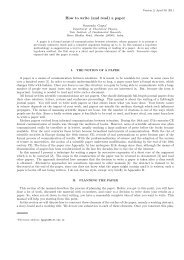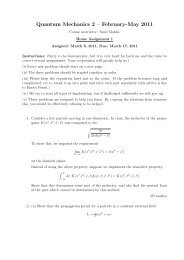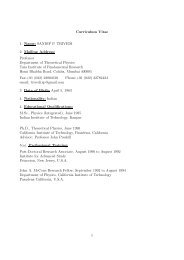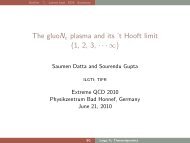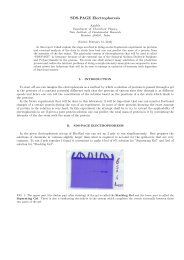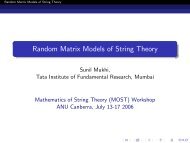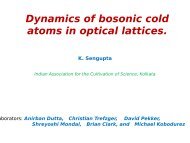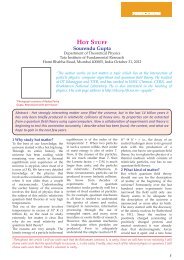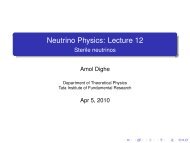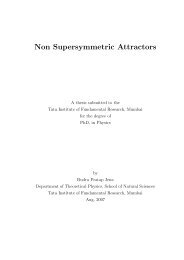Lattice QCD with chemical potential
Lattice QCD with chemical potential
Lattice QCD with chemical potential
Create successful ePaper yourself
Turn your PDF publications into a flip-book with our unique Google optimized e-Paper software.
The Taylor Expansion<br />
Since P V = −F = T log Z, the Taylor expansion of P is the same as of F !<br />
1<br />
V P (T, µ u, µ d ) = 1 V P (T, 0, 0) + ∑ f<br />
n f µ f + 1 2!<br />
where the quark number densities and susceptibilities are—<br />
∑<br />
χ fg µ f µ g + · · ·<br />
fg<br />
n f = T V<br />
χ fg = T V<br />
χ fgh··· = T V<br />
∂ log Z<br />
∂µ f<br />
∣ ∣∣∣µf<br />
=0<br />
∣<br />
∂ 2 log Z ∣∣∣µf<br />
∂µ f ∂µ g =µ g =0<br />
∂ n log Z<br />
∣<br />
∂µ f ∂µ g ∂µ h · · ·<br />
∣<br />
µf =µ g =···=0<br />
Chemical <strong>potential</strong>/S. Gupta: IMSc, 2003 to plan, Phases, Reweight, Expansion, QNS, strangeness, EOS, masses, end 8






